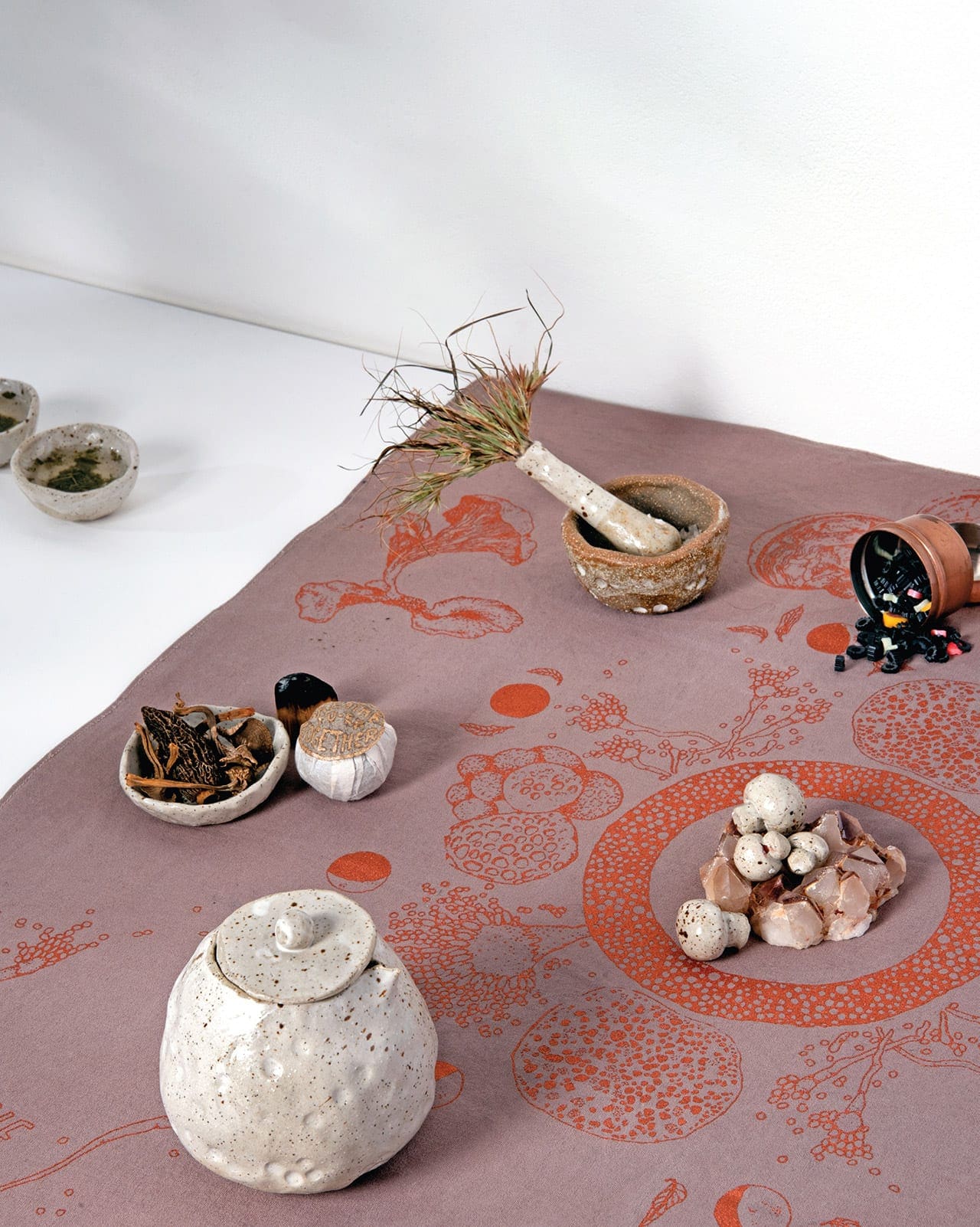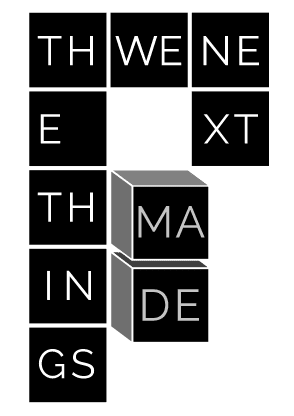

Breathe Together (Aspergillus tubingensis) 2029
Inspired by
f-UN-gus



Future generated by Beverly, Bron, Deborah, Joshua, Robert, Pippa. Written by Pippa Bailey.
IMAGE DESCRIPTION:
Three pages of text as follows, but each time the word ‘fungus’ appears it is written in bold, with the letters UN capitalised, and in a font different to the rest of the text, that is blurred at the edges and suggestive of something growing out from each letter.
PROCLAMATION
UNUN Day of Celebration
October 24, 2029
Gondwanaland Region
Continent 7
Deadly Dirt Rave
The fUNgus
Amongst Us
CALL OUT
To all UN communities across the world:
Register your local Altar Festivities for this important day of global celebration.
The UNUN Treaties Collection is available for all communities to access.
Please note that 2029 is the 7th anniversary of the First Nations Treaties within Continent 7, formerly known as Australia.
Citizens are encouraged to register needs yet to be captured.
We remain committed to equity at the highest level.
Breathe Together.
Please crypto-message the Dispersed Headquarters of UNUN
to upload invitations and orders of procedure.
Alert others to let them know whether your community will welcome visitors
or be a closed event
due to illness or sorry business.
THEME 2029
The theme for this year’s celebration is
fUNgus.
A mere 10 years ago fUNgus was starting to be generatively used to address the Climate Crisis but few could have predicted the vital role it would play.
Now the fungal kingdom is celebrated in all its eukaryotic glory.
Yeasts, moulds and microorganisms are key to our interconnected future.
As many will already know, fUNgus has been around for more than 400 million years. With strong evidence that it was the dominant life form on Earth 250 million years ago, there is increasingly detailed evidence of close human relationship to this kingdom and recognition that ancient Aboriginal fungal lore and knowledge has been passed orally from generation to generation. It was traditionally used for medicines, food and recreation.
We rely on fUNgus for lifesaving drugs, biobased fuels, fragrances, adhesives, durable lightweight packaging that can be made into shoes and a growing suite of small biological molecules. Most significantly the Aspergillus tubingensis species of fUNgus has been developed to destroy plastic and is helping to resolve the waste crisis created from the 1950s to the 2020s. Most exciting was the applied use of this fungal process in saltwater to reduce the plastic soup in our oceans. Alongside the scientific development came a popularity of liquid fungal fermentation that has rapidly spread. When psilocybin was legalised in 2024, micro-dosing became a popular pastime, opening hearts and spirits for the great UNdoing. Creative energy and purpose was UNleashed.
Transition from chemical factories to biological fermenters saw the culture embrace fUNgus ceremonies.
This year honours thriving rituals, popular in many parts of the world.
Bend your brain and UNwind!
IDEATION
Thanks to the local quorum of the Kulin Nation Chapter of
the UNUN Youth Peace and Environmental Protection Corps,
who determined the theme and look of this year’s Deadly Dirt Rave.
Dress-Code
1990s
DJ
Funkmaster Vinnie
Get your shrooms on!
Entertainment
The Busy Workers
Participate in the comic rituals of bureaucrats
(so that we never go back to those bad old days!)
Communities of care
Former prisoners share stories of prison life,
former billionaires randomly distribute more sequestered funds.
Choir of the UNvoiced
Long table feasting
Advance Fermentation Parties
(why wait to celebrate!)
Special Guest
The Prof
Breathe Together
SUPPORTING TRANSMISSIONS
MEMORY BACKLOG Formerly ‘United Nations Day’, communities across earth have transitioned this international event through the Dispersed UNUN. This will be the 82nd day of celebration since ‘United Nations Day’ was first conceived as an international day of recognition in 1947. Since the United Nations decentralised in 2024, the UNUN has refocused locally into a myriad of mobile departments across the 7 continents, responding to local challenges and conditions while still being able to seek knowledge and advice from the whole system. This action was a cornerstone of the era of the great UNdoing of bureaucracy and authoritarian structures to reimagine the UNjust. The institutions formerly known as police, defence forces and correctional facilities were UNmade with justice redirected to care and foster programs within communities. Removing UNnecessary fences, walls and borders was an important start to the process. The Peace and Environmental Protection Corps now move between communities and countries caring for the many pop-up refugee camps that emerge as rolling disasters.
ORACLE ALERT During Altar Festivities, the fungus ceremonies will stir our Oracles, those who were once marginalised, to keep watch for signs of war. Chapters around the world will be tuning in and preparing for end-of-season announcements. We must be vigilant and listen deeply. Our Oracles keep us alert to shadow forces that threaten our new, UNreal way of life.
Dispatch prepared by Comms Team, Dispersed Headquarters of UNUN: Beverly, Bron, Deborah, Joshua, Robert, Pippa
With Beverly, Bron, Deborah, Joshua and Robert
ARTIST’S STATEMENT
Commemorative altar kit with cloth & various ceremonial objects (silkscreen print on cotton, glazed stoneware ceramics, kangaroo grass, quartz crystal from Mt Isa, copper tin, pu-er tea, dried mushrooms, sea salt, soil, palo santo, plastic waste).
To celebrate the 7th anniversary of the First Nations Treaties within Continent 7, formerly known as Australia, this commemorative altar kit pays tribute to a host of revered mushroom companions. Foremost among these is the fungus Aspergillus tubingensis – named by an Italian biologist-priest exactly 300 years ago for its microscopic resemblance to the aspergillum (holy water sprinkler) – lately risen to prominence for helping to clear our oceans of microplastics, and which incidentally forms part of the microbial community in fermented pu-er tea. Also featured on the altar cloth are Laccocephalum mylittae (whose underground sclerotium is eaten raw or roasted), Cyttaria gunnii (spherical, edible fruiting bodies), Phellinus sp. (bracket fungus smoked for sore throats), Podaxis pistillaris (Stalked Puffball, a desert fungus used to darken old men’s whiskers), and the toxic phosphorescent ‘ghost fungus’.
A set of ceremonial ceramic stoneware objects accompany the cloth and may be used for altar festivities involving offerings of soil, salt, dried mushrooms and plastic waste for example, sharing pu-er tea, and burning tree sap or wood fungus. Kangaroo grass, now widely used for our much-loved daily bread, makes a special appearance as part of a contemporary aspergillum that also doubles as a pestle.
Create your own eukaryotic rituals. Breathe together.
Made on Gadigal land with the invaluable assistance of Susie Nelson (drawing), Leila Khazma (ceramics) and Alba Stephen (screenprinting).
Size: Various
Materials: Silk screen print on cotton, glazed stoneware ceramics, kangaroo grass, quartz crystal from Mt Isa, copper tin, pu-er tea, dried mushrooms, sea salt, soil, palo santo, plastic waste
Edition of 1
Image Description
A dusty pink cotton cloth screen printed with metallic copper designs depicting different mushroom species. One gold ring in the centre which the other designs radiate out from. Phases of the moon are also interspersed amongst the illustration. Placed within the centre of the ring is a multi-peaked crystal with hand-made ceramic button mushrooms. A ceramic handmade teapot sits at the front left. A collection of other handmade ceramic vessels are placed on and around the cotton cloth: pinch pots, mortar and pestle, and two cups with herbal tea. A small copper tin is on its side spilling its contents of small plastic waste pellets.


